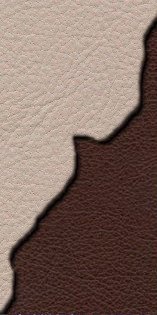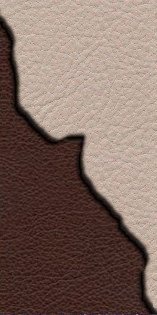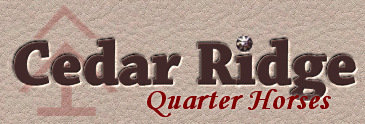

AQHA GENETIC DEFECTS AND UNDESIRABLE TRAITS
Taken directly from the 2012 AQHA Rule Book -
205. GENETIC DEFECTS AND UNDESIRABLE TRAITS. In accordance with its Mission
Statement and Welfare Policy Statement, AQHA endeavors to educate its
membership and protect the welfare and integrity of the breed. Part of such
endeavor includes AQHA’s efforts associated with t...he research,
identification and promulgation of rules and regulations concerning genetic
defects and undesirable traits through AQHA’s governance process. In that
regard, researchers have noted that the American Quarter Horse does not have
more genetic diseases than other equine breeds, AQHA has just been proactive
and taken the lead at identifying genetic diseases affecting the American
Quarter Horse breed. The conditions listed below and commonly considered
undesirable traits or genetic defects by the Board of Directors shall be
indicated on the registration certificate for horses foaled on or after the
indicated date, once the condition is known. Upon discovery, the owner shall
immediately report such condition to AQHA for marking its condition on the
registration certificate as provided below. Failure to
timely report these conditions may subject the owner to possible
disciplinary action. With respect to the genetic diseases listed
below, mandatory testing is only required with respect to HYPP in accordance
with Rule 205(c)(2-3). However a panel of DNA tests for all of the genetic
diseases listed below (items c through g) is available through AQHA. Subject
to Rule 205(c)(3) and/or the rules of the individual event: One or more of
these conditions does not prevent a horse from being used as breeding stock
or from participating in AQHA-approved events, Genes come in pairs; each
parent contributes one copy to the offspring. With respect to the autosomal
dominant genetic diseases listed below (HYPP, PSSM, and MH), only one
defective gene is necessary to express the genetic disease in question. Such
gene can be inherited from either of the parents or from both of the
parents.
With respect to autosomal recessive genetic diseases listed below (GBED and
HERDA), typically, two copies of an abnormal gene (two copies = a pair) must
be present in order for the horse to show signs of the genetic defect in
question. Horses with only one copy of the defective gene are considered
“carriers”.
(a) Parrot Mouth - either overshot or undershot, defined by the American
Association of Equine Practitioners as “no occlusal contact between the
upper and lower central incisors.” Designation effective for foals born on
or after January 1, 1992.
(b) Cryptorchid - meaning less than two visible testicles descended into the
scrotum. Designation effective for foals born on or after January 1, 1992.
(c) Hyperkalemic Periodic Paralysis (HYPP) - designation effective for foals
born on or after January 1, 1998. HYPP is an inherited autosomal dominant
genetic disease. A muscular disease caused by a hereditary genetic defect
that leads to uncontrolled muscle twitching or profound muscle weakness, and
in severe cases, may lead to collapse and/or death. According to research,
this condition exists in certain descendants of the stallion Impressive,
AQHA registration number 0767246.
(1) The following notification shall be placed on registration certificates
of foals descending from the stallion Impressive or any other bloodline
determined to carry the HYPP gene:
“This horse has an ancestor known to carry HYPP, designated under AQHA rules
as a genetic defect. AQHA recommends testing to confirm presence or absence
of this gene.”
When the parent(s) tracing from the HYPP line has tested negative for HYPP
with an appropriate designation appearing on their registration certificate,
the above notification is not required, and will, instead, be substituted by
the designation “N/N”; or, after testing negative for the gene, the
notification may be substituted by the designation “N/N” upon request of the
owner at his or her expense.
(2) Mandatory testing for HYPP. At such time as AQHA requires mandatory
parentage verification of any foals to be registered in either the numbered
or appendix registry, (see 202(i)) any foal tracing to bloodlines known to
carry the HYPP gene shall be tested for HYPP at the time the genetic testing
for parentage is performed. The results will be designated on the
registration certificate in lieu of the above notification. Such testing
will not be necessary if the foal’s closest ancestors (parents), tracing to
the HYPP line, have been tested negative and designated on their
registration certificates, these foals will automatically be designated
“N/N” on their registration certificate.
(3) Effective with foals born on or after January 1, 2007, all descendants
of the stallion Impressive, AQHA registration number 0767246, shall be
required to be parentage verified and HYPP tested, subject to the conditions
in (c)(2) above. Any foal testing homozygous positive for HYPP (H/H) will
not be eligible for registration with AQHA.
(d) Polysaccharide Storage Myopathy (PSSM) is an inherited autosomal
dominant genetic disease that causes excess glycogen storage in muscles
which can result in tying-up, muscle tremors, and/or gait abnormalities.
(e) Glycogen Branching Enzyme Disease (GBED) is an inherited
autosomal recessive disease that terminates protein synthesis which can
result in late-term abortions or death in foals shortly after they are born.
(f) Hereditary Equine Regional Dermal Asthenia (HERDA), also known as
hyperelastosis cutis (HC), is an inherited autosomal recessive disease that
weakens collagen fibers that connect the skin of a horse to the rest of the
horse. Affected horses can have fragile hyperextensible skin which can
result in tears, scars and lesions. Affected horses are also known to
exhibit impaired healing to such injuries.
(g) Malignant Hyperthermia (MH) is an inherited autosomal dominant
disease that causes a life-threatening condition that is usually triggered
by exposure to certain drugs used for general anesthesia. In susceptible
horses, these drugs can induce an uncontrolled increase in skeletal muscle
oxidative metabolism which affects the body's capacity to supply oxygen,
remove carbon dioxide, and regulate body temperature, potentially leading to
circulatory collapse and death if not treated quickly.
(h) White Markings: A horse having white markings with underlying light skin
beyond any one of the following described lines shall be eligible for
registration by AQHA only if it is parentage verified through DNA typing the
offspring, its sire and its dam. Breeders should be aware that the American
Quarter Horse, while long recognized, identified and promoted as a
solid-colored horse, can and does occasionally produce offspring with overo
paint characteristics. Such markings are uncharacteristic of the breed and
are considered to be undesirable traits. The following notification shall be
placed on registration certificates of horses exceeding these marking
limitations:
“This horse has white markings designated under AQHA rules as an undesirable
trait and uncharacteristic of the breed.”
(1) A line parallel with the ground drawn around the front leg at the point
halfway between the point of the elbow (the center of the olecranon
tuberosity or proximal epiphysis of the ulna) and the protrusion on the back
of the knee (the accessory carpal bone or lateral styloid process).
(2) A line parallel with the ground at the center of the gaskin on the hind
legs. (The center of the gaskin shall be defined as an imaginary point on
the front of the gaskin equidistant between the stifle joint and the center
of the hock.) The top point of reference to be the bony protrusion on the
inside (medial) of the stifle region (technically known as the medial
condyle of the tibia) and the most prominent bony protrusion at the top and
inside of the hock (technically known as the medial malleolus of the tibia).
(3) A line around the horse’s neck immediately behind the poll and through
the midpoint of the throat latch.
(4) Within an area described as two inches on either side of the ventral
midline, beginning at a point midway between the front legs and extending
to, and including, the sheath and udder. (5) Additionally, there is allowed
a single area of white markings with underlying light skin, such that it can
be completely covered with a disk one inch in diameter, either free standing
on the horse’s body or being a portion of white marking extending past the
above prescribed lines.
(6) Areas of white, pink or mottled skin located on the horse’s genitalia,
including the sheath or udder, in the axillary region (armpits) or inside
the hind legs, including the inner surface of the hindquarters up to and
including the ventral surface of the tail, and which are not readily visible
when the horse is in a standing position are not considered white markings
as described in (h) above.
This page last updated
08/10/20
If you notice this date being 2 years or older, please let
us know that we need to check out this page!


Home Horses For Sale Stallions Mares Foals Blog Color Genetics Riding Horses Site Map Contact Us

Toni Perdew
Bedford, Iowa
toni@grullablue.com
712-370-0851 cell, before 9 p.m. CST
![]()
www.facebook.com/CedarRidgeQuarterHorses
Web design by
CR
Equine Sites.
All rights reserved. Graphics are watermarked for copyright protection.
Terms of Use
